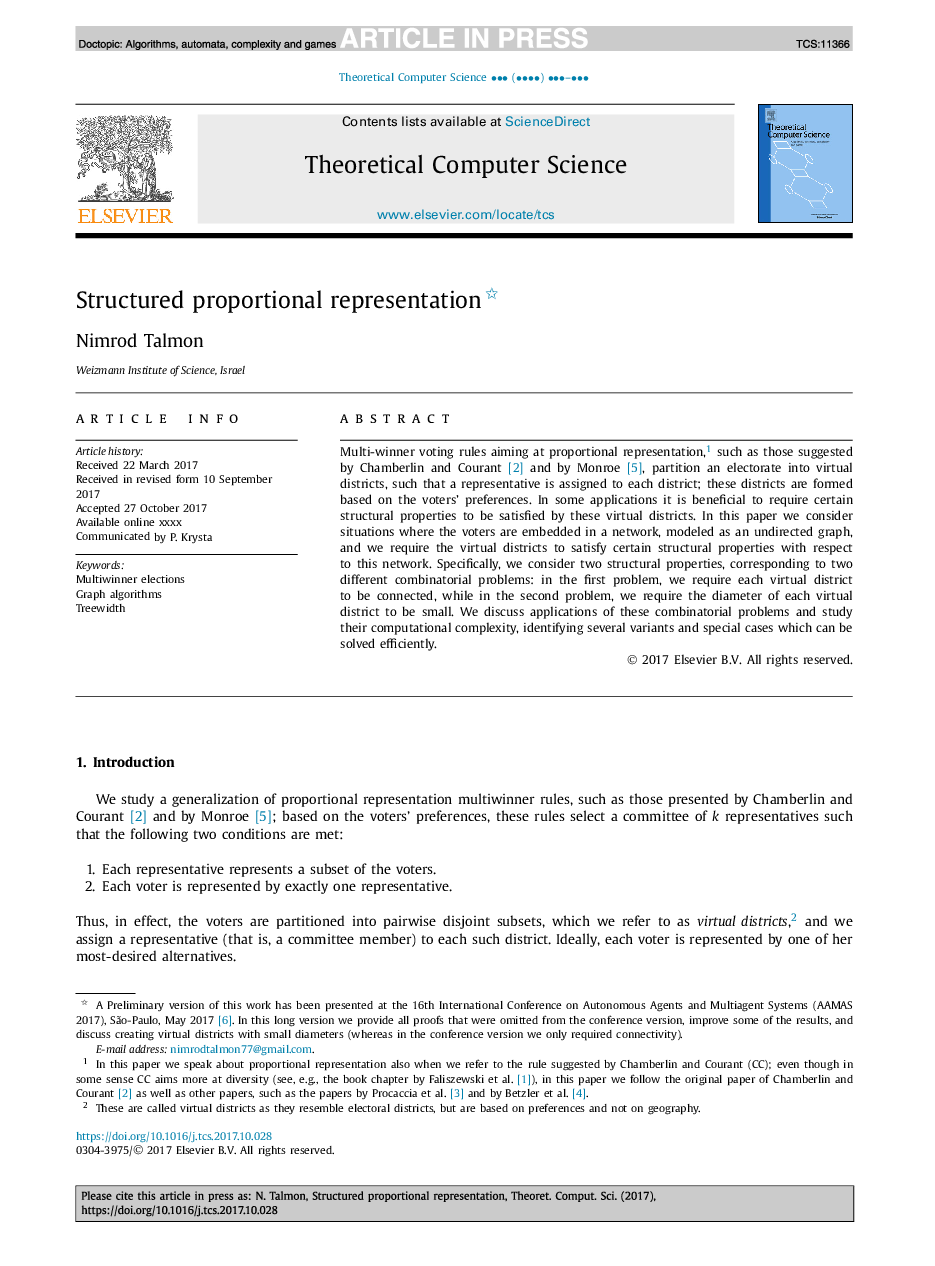| Article ID | Journal | Published Year | Pages | File Type |
|---|---|---|---|---|
| 6875707 | Theoretical Computer Science | 2018 | 17 Pages |
Abstract
Multi-winner voting rules aiming at proportional representation,1 such as those suggested by Chamberlin and Courant [2] and by Monroe [5], partition an electorate into virtual districts, such that a representative is assigned to each district; these districts are formed based on the voters' preferences. In some applications it is beneficial to require certain structural properties to be satisfied by these virtual districts. In this paper we consider situations where the voters are embedded in a network, modeled as an undirected graph, and we require the virtual districts to satisfy certain structural properties with respect to this network. Specifically, we consider two structural properties, corresponding to two different combinatorial problems: in the first problem, we require each virtual district to be connected, while in the second problem, we require the diameter of each virtual district to be small. We discuss applications of these combinatorial problems and study their computational complexity, identifying several variants and special cases which can be solved efficiently.
Keywords
Related Topics
Physical Sciences and Engineering
Computer Science
Computational Theory and Mathematics
Authors
Nimrod Talmon,
